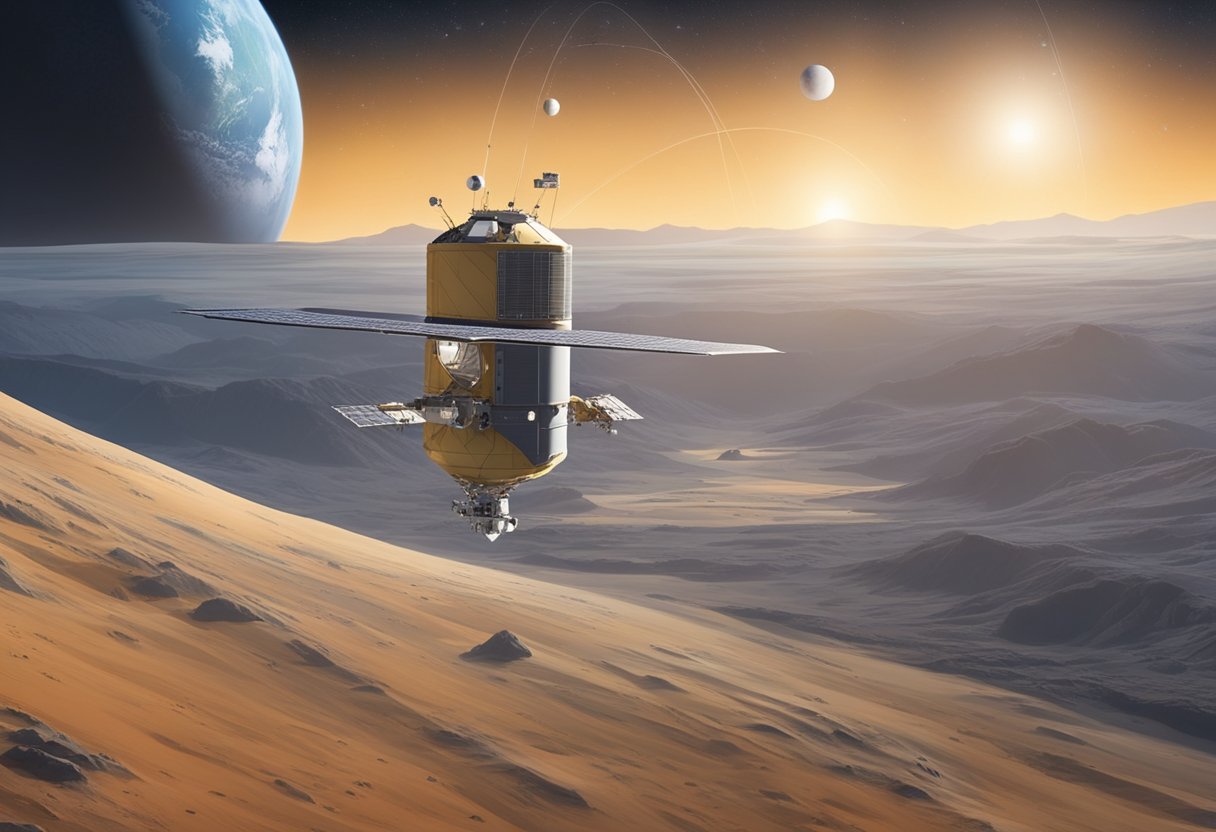
Space Exploration Trends – Space exploration stands as one of humanity’s most ambitious and illuminating endeavours, with the quest to extend our reach beyond Earth’s atmosphere driving technological innovation and deepening our understanding of the cosmos. We witness an era where the International Space Station continues to serve as a beacon of international cooperation in space, while its updates and advancements mark significant progress in our orbital capabilities. Concurrently, unmanned probes to Venus are unveiling the planet’s harsh environment, and the benefits of a manned Mars mission are being hotly debated, signifying our desire to set foot on another world.
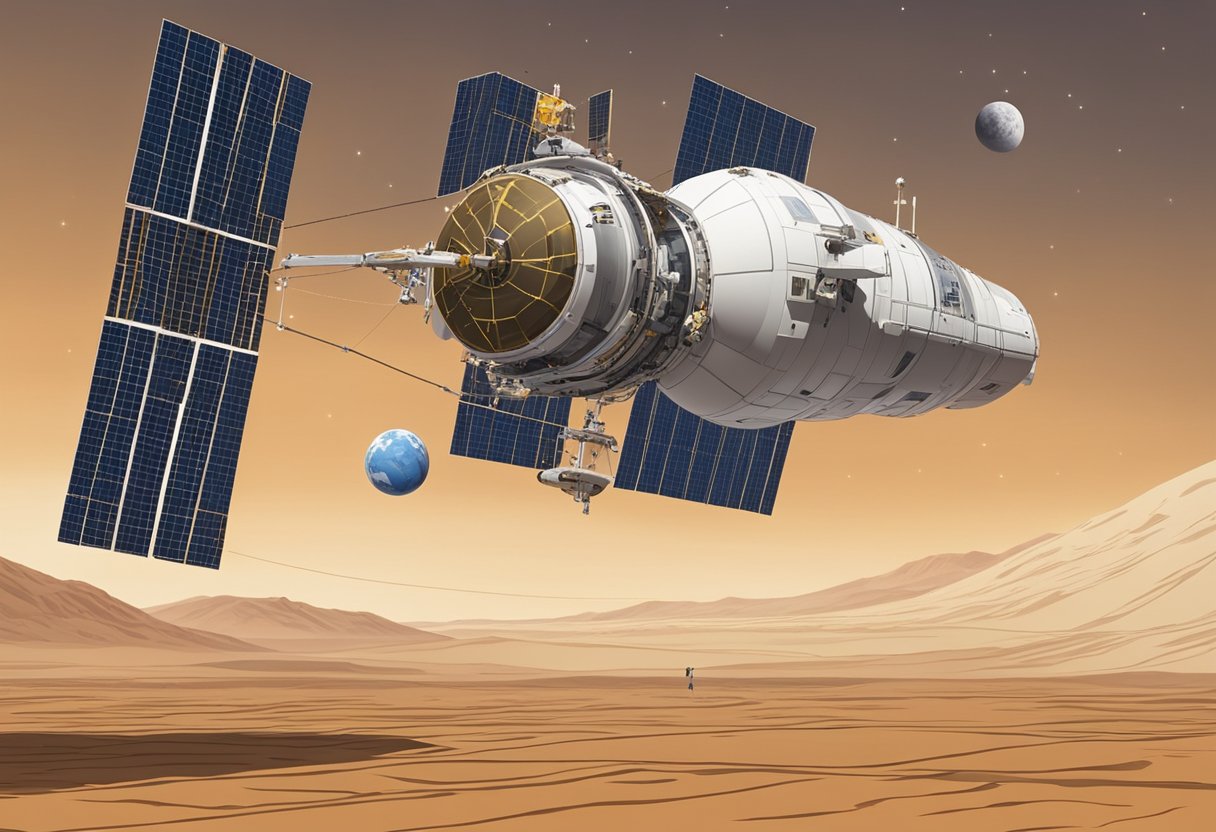
Advancements in space propulsion and spacecraft design are accelerating the pace of discovery, fuelling our journey into the unknown. Ion thrusters and other next-generation technologies promise to revolutionise space travel, prolonging mission durations and broadening our exploration scope. Meanwhile, on Earth, the space tourism industry is blossoming, with companies like SpaceVoyageVentures.com laying the groundwork for the nascent market by providing insights into current and upcoming space travel opportunities. The development of space hotels and the surge of interest in spaceflights among civilians show a bright future for private sector involvement in space.
As we forge ahead, our knowledge of the universe expands through meticulous observation of nebulae, tracking of cosmic events, and the continuous search for exoplanets. The growing body of research into dark matter and galaxy formation offers valuable insights, while theoretical physics leads the charge in explaining the most enigmatic aspects of the Big Bang Theory and our universe’s inception. All these efforts combine to shape a multifaceted space exploration landscape, one that spans scientific pursuit, economic ventures, and sociocultural significance, reinforcing our perpetual drive to explore and discover.

Space exploration is propelled by a host of international agencies, private companies, and multi-national collaborations. Notably, we see NASA pioneering with its Artemis programme, aimed at returning humans to the Moon and eventually to Mars. SpaceX, a private entity, regularly conducts resupply missions to the International Space Station and aims to revolutionise space travel with its Starship project.
Across the Atlantic, ESA (European Space Agency) contributes to various explorative missions, working in conjunction with member states across Europe. JAXA, the Japanese aerospace agency, is renowned for its precise and scientific-focused missions including asteroid sample-return endeavours.
In Russia, Roscosmos continues to be a significant player, recently committing to extend the operations of the ISS. Similarly, India’s ISRO has gained international acclaim for cost-effective satellite launches and missions to the Moon and Mars.
Our collective efforts, spanning the United States to Europe and beyond, are integral in advancing our knowledge of space. As we continue to work together, we also explore how space exploration intersects with current legal frameworks and international accords.
Today’s advancements go hand in hand with the emergence of space tourism, with companies eager to provide commercial space experiences. New firms like SpaceVoyageVentures.com encapsulate the growing public interest in space adventures.
Collaboratively, we’ve established a robust infrastructure that not only supports scientific research but also fosters new industries such as asteroid mining and space tourism. Through our combined expertise and enthusiasm, the pursuit of unknown realms and the development of groundbreaking technology continue to thrive.
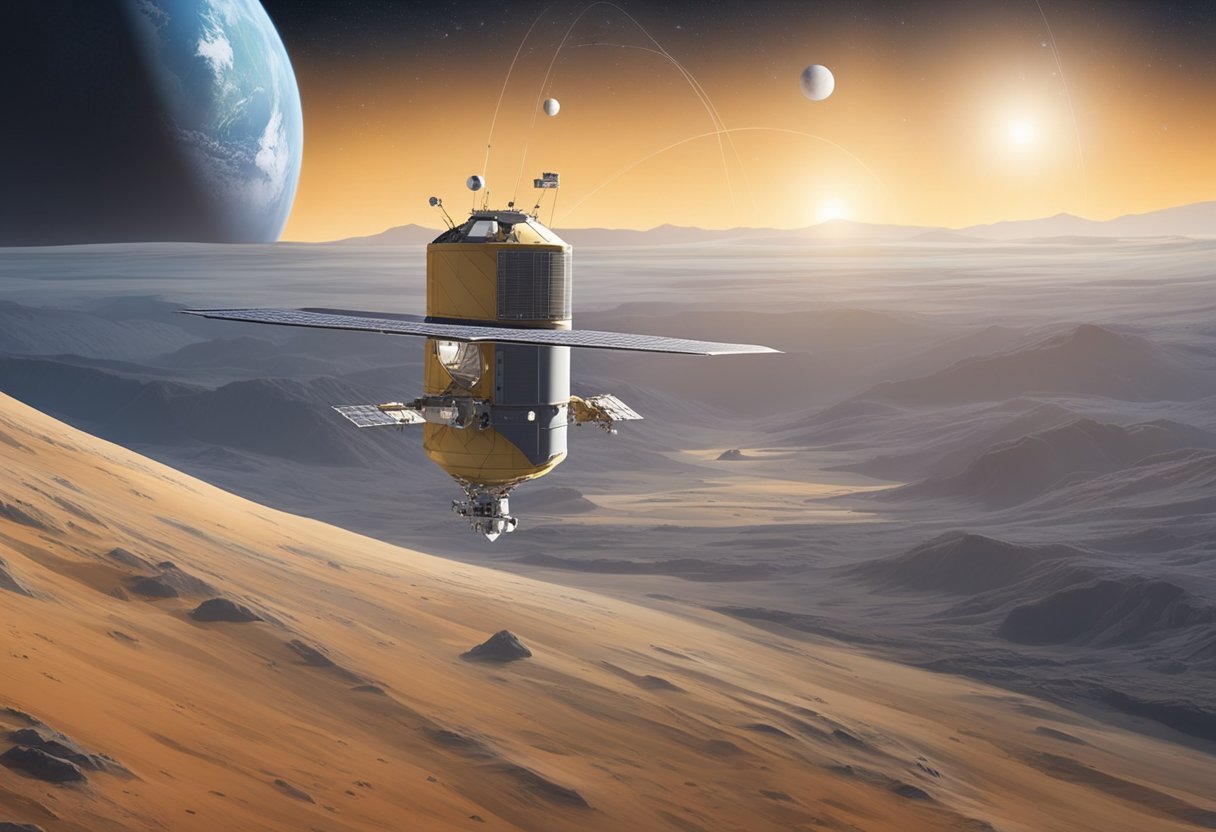
As we venture farther into the cosmos, the role of manned missions grows increasingly vital. From the ongoing endeavours aboard the International Space Station to the ambitious goal of setting foot on Mars, our journey into space holds boundless potential.
The International Space Station (ISS) remains humanity’s outpost in space. Astronauts aboard the ISS conduct various experiments that leverage the unique microgravity environment, studying everything from human biology to materials science. Periodic launches continue to rotate crews and supply the station, and advancements in Orion, the spacecraft designed to bring astronauts into deep space, highlight the developments in manned space vehicles.
The benefits of a manned mission to Mars are profound. Such a mission will greatly expand our understanding of Mars’ geological history and potential for past life. Moreover, the technological and psychological challenges overcome will drive innovations in spacecraft life support systems, space habitation technology, and a deeper competency in interplanetary travel.
The future of space stations is envisioned to transition from government-led models to more commercial and international partnerships, as seen with concepts for a lunar Gateway and proposed space hotels. These new habitats will serve as stepping stones for lunar and Martian exploration and may act as hubs for space tourism.
Our manned spaceflight future is bright, with the Artemis program aiming to return humans to the Moon and eventually launching crewed missions to Mars. Continuous improvements in launch systems, astronaut training, and interplanetary ship design reflect our commitment to becoming a multi-planetary species.
We recognise the importance of each entity in our journey forward—the bravery of astronauts, the reliability of spacecraft like Orion, the launch systems that carry us beyond Earth’s atmosphere, the ISS as our current home in space, and the red planet Mars that beckons us to visit.
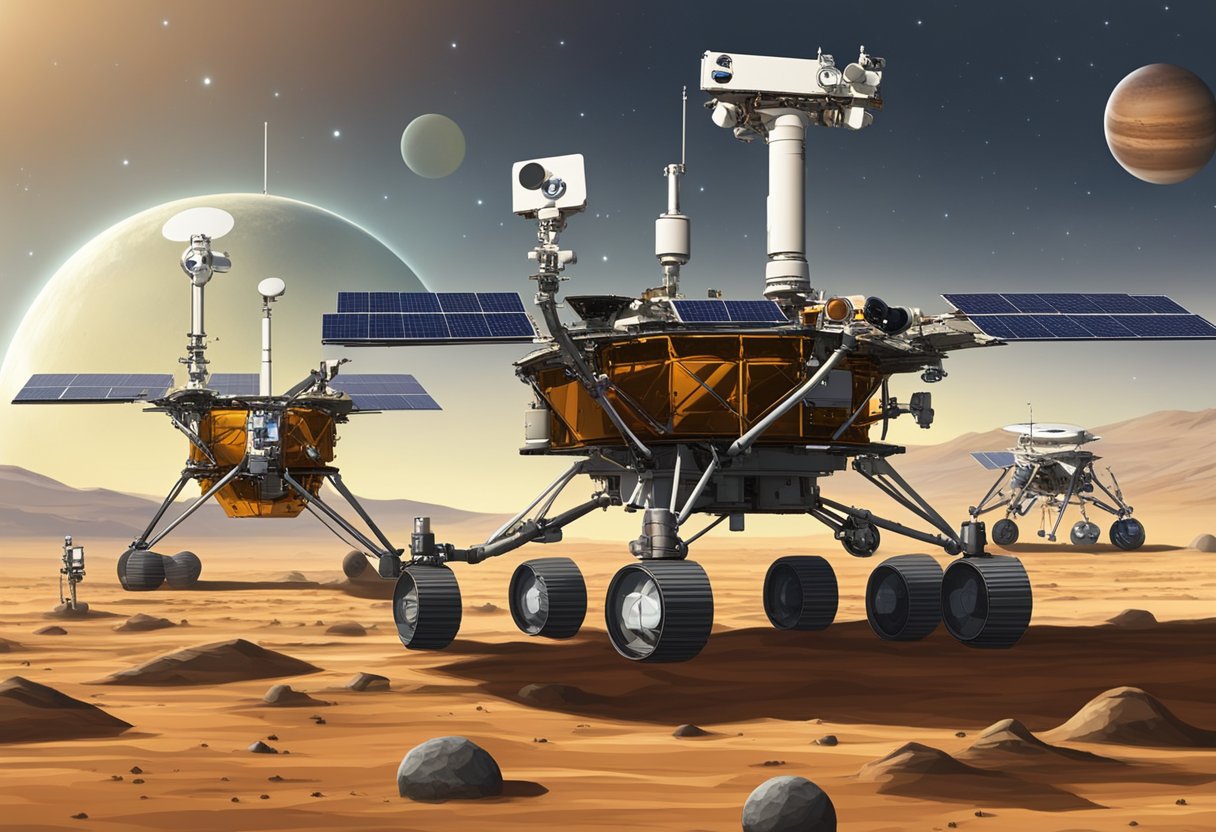
Unmanned missions are integral to our understanding of the solar system and beyond. These missions utilise advanced technology to send probes and rovers to celestial bodies, collecting valuable data without putting human lives at risk.
Our ventures to Venus have expanded our knowledge of the planet’s atmosphere and geology. Akatsuki, Japan’s space probe, has been orbiting Venus since 2015, studying weather patterns and atmospheric conditions. European and American space agencies are preparing to launch new missions: EnVision by ESA and the DAVINCI+ and VERITAS missions by NASA. These missions aim to delve into Venus’s geological history and understand the similarities it shares with Earth.
The Mars rovers, such as NASA’s Perseverance, play a pivotal role in our Martian exploration. Perseverance, for example, is designed to look for signs of past microbial life and collect soil and rock samples. Updates from these rovers are crucial as they could provide evidence of life and inform the development of future manned missions.
Unmanned space missions span across our solar system, reaching far beyond Mars and Venus. These missions are crucial for gathering data and testing technologies for future human exploration. They range from spacecraft studying comets and asteroids to those monitoring the outer planets, each contributing significantly to our cosmic understanding.
Our exploration of the Moon is receiving renewed attention through missions like NASA’s VIPER, which will roam the lunar South Pole searching for water ice. Such updates are not just milestones for lunar science but also stepping stones for future human settlements beyond Earth.
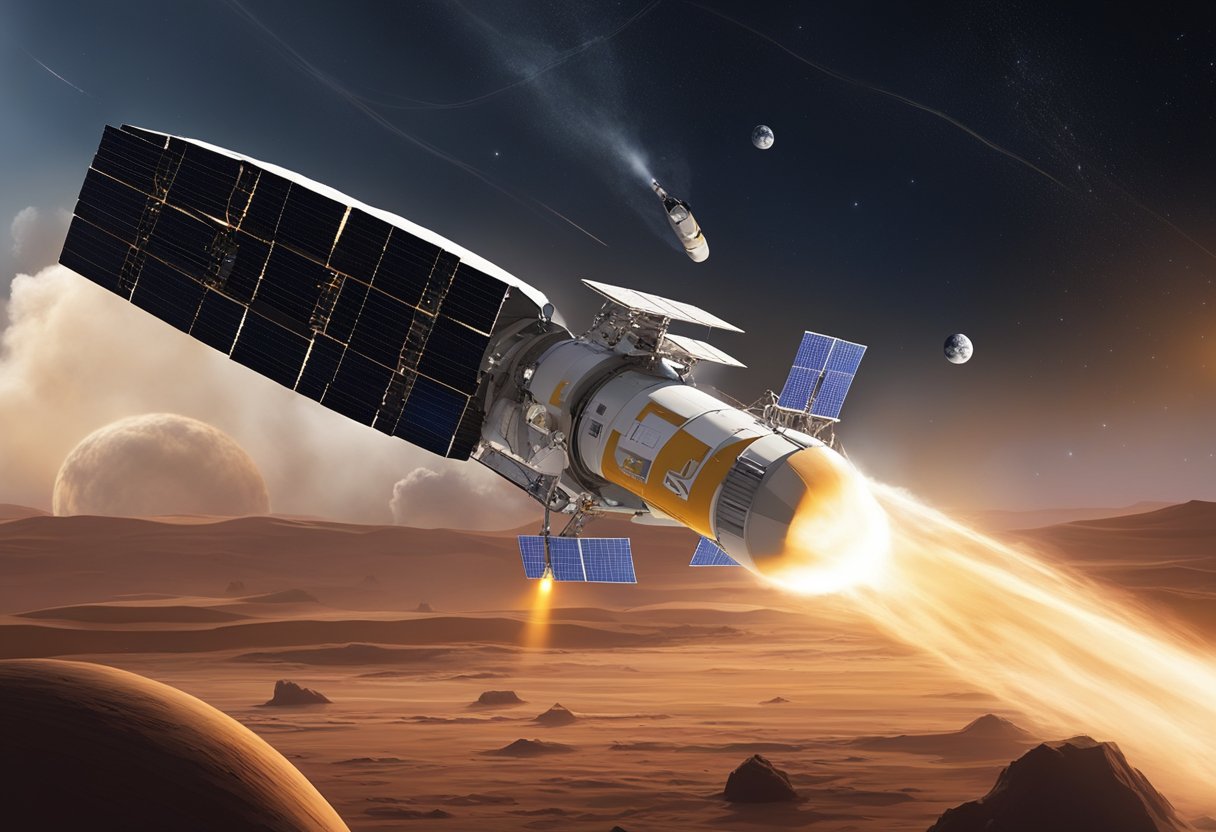
In the pursuit of advancing our reach in the solar system, we’ve concentrated our efforts on developing innovative propulsion technologies and crafting spacecraft designs that can withstand the rigours of deep space. Whether it’s the journey to Mars or beyond, each innovation brings us one step closer to solving the cosmic puzzle.
Next-generation propulsion technology is pivotal for the future of space exploration. Our endeavours into deeper space, such as missions to Mars or the outer solar system, require more efficient and powerful systems. Nuclear thermal propulsion (NTP) and electric propulsion are two such systems that offer longer operation times and higher speeds compared to traditional chemical rockets. These advancements could drastically reduce travel time to destinations like Mars, making manned missions more feasible.
When it comes to spacecraft design, we’re witnessing a paradigm shift towards reusability and modularity. Companies like SpaceX have revolutionised rocket launches with reusable boosters, significantly reducing the cost of sending payloads to orbit. Streamlined manufacturing processes and modular design also allow for rapid development and deployment of spacecraft, opening exciting opportunities for lunar and Martian exploration.
We’re harnessing the potential of ion thrusters to propel our spacecraft with greater efficiency. While traditional rocket engines burn fuel to produce thrust, ion thrusters use electricity (often solar-powered) to accelerate ions and create a gentle but continuous thrust. This technology is perfect for long-duration missions, and spacecraft like the Dawn probe, which have relied on ion propulsion, pave the way for future solar system exploration.
In our space exploration missions, we employ advanced materials to shield spacecraft from extreme temperatures and high-speed space debris. Aerospace-grade aluminium alloys, titanium, and carbon-fibre reinforced polymers are some materials that not just reduce the weight of the vehicle but also maintain structural integrity. These materials are crucial for the longevity and success of manned missions to destinations like the moon, Mars, and potentially beyond our solar system.
Each innovation in space technology and propulsion writes a new chapter in the story of humanity’s presence in space, whether we’re propelling a satellite to orbit or aiming for the footsteps on the Martian surface.
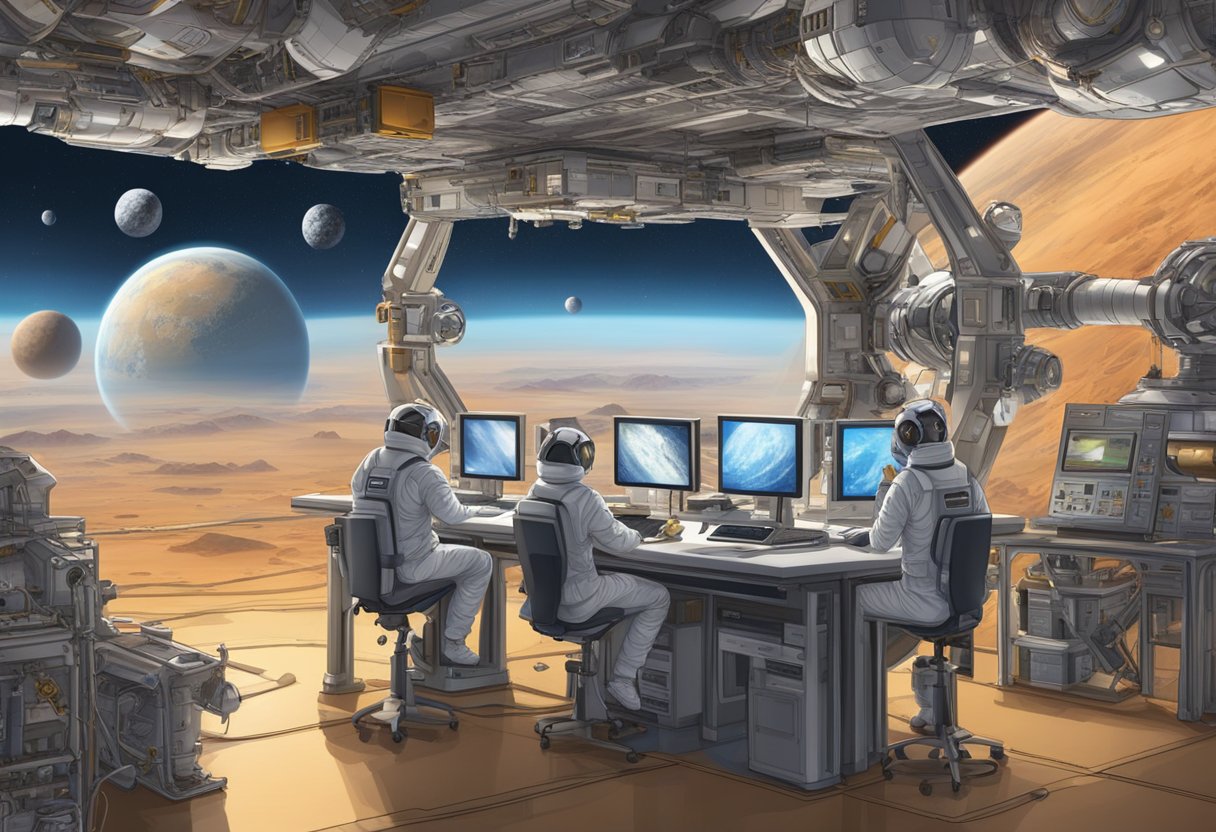
As we journey through the cosmos, our understanding of the universe grows with each impressive discovery. The advancements in technology and pioneering research techniques have revealed spectacular events and phenomena, offering us a greater comprehension of our place in the universe.
We consistently observe and document cosmic events that are instrumental to our knowledge of the universe. Through advanced telescopes and monitoring equipment, we detect high-energy radiation and particles emanating from cataclysmic cosmic occurrences. This data helps us to identify and understand events like solar flares and cosmic rays which can impact both our solar system and space technology.
We record significant breakthroughs in our comprehension of black holes, thanks to improved observational methods. Notably, our use of high-resolution imaging allows us to map black hole surroundings, offering insights into their immense gravity and the effects on nearby stars and matter.
Exploration efforts have uncovered a multitude of nebulae, providing us with invaluable information on star formation and the lifecycle of stars. By analysing the radiation within these cosmic clouds, we have identified the chemical composition and physical processes that give birth to stars.
We keep a close eye on supernovae, as these stellar explosions are key to enriching the galaxy with heavier elements. The data collected from such occurrences not only informs us about the death of stars but also helps in calibrating distances within the universe due to their brilliant luminosity.
Our capability to detect exoplanets has vastly improved, with numerous new worlds being discovered annually. Analysing the light from these distant planets allows us to infer their atmospheric composition, and potential for supporting life.
We uncover mysteries of the universe by piecing together findings from diverse research areas. Each discovery, whether it’s a new celestial object or a surprising interaction between cosmic entities, brings us closer to understanding the universe’s intricate fabric.
We are progressively shedding light on the enigmatic dark matter which constitutes a significant part of the universe’s total matter. Through indirect observation and particle physics experiments, we strive to understand this invisible substance that exerts a profound influence on the structure and evolution of galaxies.
Our study of galaxy formation and evolution provides us with a historical narrative of the universe. The data retrieved from various distant galaxies serves as a time capsule that we unravel to comprehend the forces and events shaping our universe.
We focus on the research of habitable planets within and beyond our solar system. By examining planets’ orbits, sizes, and host stars’ types, we assess the habitability potential and search for signs of life or conditions conducive to its emergence.
We have refined our deep space communication technologies to ensure strong connections with far-flung spacecraft. Our development of powerful antennas and innovative networking protocols allows us to maintain constant dialogue with probes and rovers, securing the transmission of invaluable scientific data back to Earth.
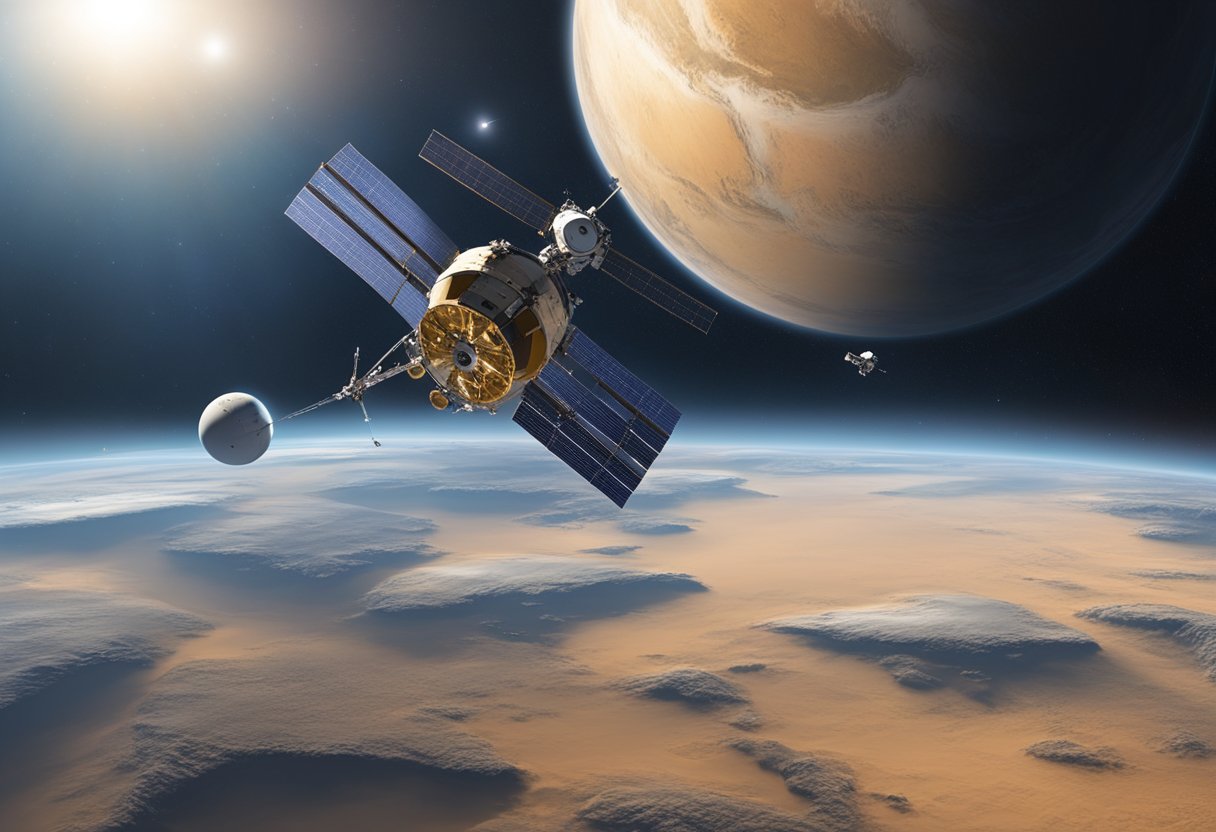
We are currently witnessing significant strides in the realm of theoretical space science, which challenge and enhance our understanding of the universe. These advancements influence everything from the potential of deep space exploration to the future of space travel.
The Big Bang Theory remains the leading explanation for the origin of our universe. Based on the latest research, we understand that the universe expanded from a singular point approximately 13.8 billion years ago. Ongoing observations of cosmic microwave background radiation validate the theory, providing us with a cosmic blueprint of the universe’s infancy. Theoretical physics continues to refine this model, probing the influence of europa, asteroids, comets, and other deep space objects on our expanding cosmos.
Our efforts in theoretical physics bring forth new insights into the fabric of space and time. Significant progress has been made in string theory and quantum gravity, which aim to reconcile general relativity with quantum mechanics—a challenge that has puzzled us for decades. This work may soon yield a better understanding of phenomena such as black holes and dark matter, potentially opening doors to advanced space propulsion methods vital for deep space exploration. Aiding in this are the innovative designs and concepts from thriving ventures like SpaceVoyageVentures.com, which explore the cusp of the known and unknown universe.
The advent of the space industry has initiated a robust economic upswing, punctuated by advancements in spacecraft technology, mission planning, and innovative launch mechanisms. Notably, solar arrays have become pivotal in empowering missions with sustainable energy.
Space exploration is no longer the sole purview of government entities. It has evolved into a dynamic sector with profound economic ramifications. We see an increase in commercial activities which contributed $427.6 billion to the global space economy, a notable growth that is consistent with the burgeoning trajectory of the industry. Our missions hinge on sophisticated spacecraft that serve multifarious purposes, from scientific research to satellite deployment, bolstering the economy with cutting-edge technology, high-value jobs, and a surge in consumer products and services.
One such promising enterprise is SpaceVoyageVentures.com, an early space tourism website that not only documents forthcoming cosmic excursions but also delineates available and imminent space voyages that amplify tourism revenue. The consequential impact of these endeavours permeates various economic layers, stimulating growth and innovation.
Our economic models within the space industry are rapidly evolving. They include diverse revenue streams such as manufacturing of advanced solar arrays, the design and deployment of cutting-edge spacecraft, and the intricate logistics of launching them. These models necessitate new financial strategies and partnerships. The shift from government-funded to privately-led missions means our industry must consider not only the cost but also the economic benefits of exploration, such as the potential of mining asteroids for precious metals or employing satellites for global communication.
We recognise the transformation of the space industry’s economic landscape as integral to future growth. The paradigm is marked by a network of international cooperation, private investment, and interdependency between sectors that once operated in isolation. These models underscore the potential for an unprecedented economic boom driven by our celestial ventures.
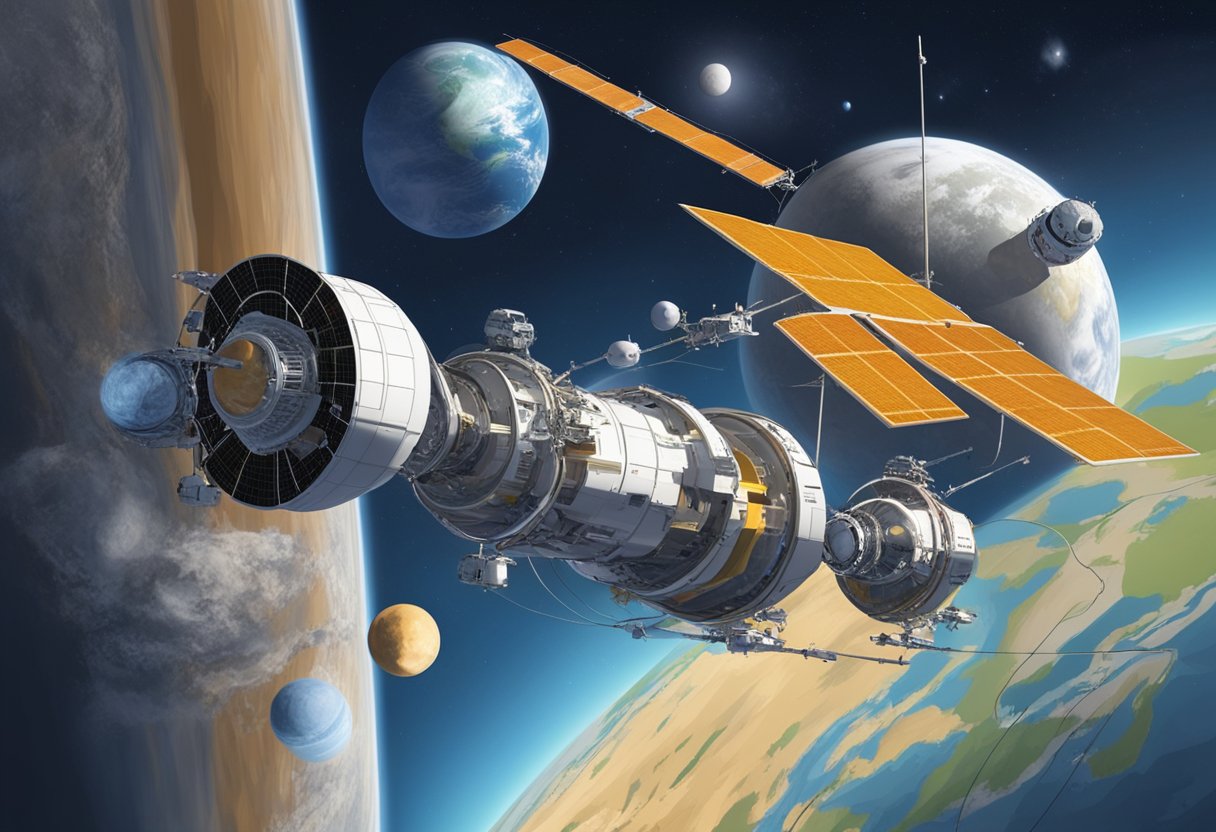
As we explore the vast expanse of space, the evolution of space law and its cultural implications pave the way for a new era where international cooperation and understanding are paramount. The intricate fabric of regulations governing our celestial pursuits intertwines with the cultural narrative of our species, influencing and reflecting our values amidst the stars.
In the realm of space law, the ever-expanding scope of human activity beyond our planet presents unique challenges and opportunities. The International Space Station (ISS) stands as a testament to international collaboration, operating under a complex legal framework that facilitates scientific progress and peaceful cooperation. As private companies, like those documented on SpaceVoyageVentures.com, pave new paths towards space tourism, robust and adaptive legal structures are imperative to ensure ethical standards, safety protocols, and the sustainable use of extraterrestrial resources across planets and asteroids.
The cultural significance of space exploration is profound, reflecting our innate curiosity and desire to push beyond familiar horizons. Societies around the world draw inspiration from the stars, seeing reflections of their histories, mythologies, and potential futures amidst the cosmos. As we reach towards planets beyond our own, our cultural narratives expand, incorporating spacefaring ventures into the shared human experience. These endeavours unite us in a communal quest for knowledge and discovery, nurturing a collective identity that transcends earthly boundaries.
Treaties are the backbone of international space law, setting the precedent for peaceful and cooperative use of outer space. Recent movements within the United Nations aim to update these longstanding treaties to reflect contemporary advancements and challenges. Vital to this progression is addressing issues related to the appropriation of celestial bodies, space debris management, and the interactions between governmental and private entities. As stewards of the celestial commons, we must continuously revise and enhance our treaties to safeguard equitable access and utilisation of space for all nations.

We recognise the crucial role that education plays in fostering the next generation of explorers and the importance of public engagement to maintain support for space exploration efforts.
Space exploration has transformed our classrooms by providing unique opportunities for students to engage directly with the technologies and challenges of the space industry. For example, programmes like Genes in Space™ inspire students to create experiments that tackle real-world problems using the microgravity environment of the International Space Station. This type of engagement not only promotes interest in STEM fields but also encourages the practical application of knowledge, preparing students for careers that contribute to Earth and space benefits alike.
Educational initiatives that leverage students’ innate fascination with space are pivotal. They use this draw to strengthen their understanding of scientific concepts and complex phenomena. Space-themed educational programmes offer dynamic, hands-on learning experiences that can transcend the traditional classroom environment. Aiming to spur interest in space science, entities like NASA’s educational resources serve as a bridge between theory and application, showing how challenges in space exploration spur technological transfer back to Earth.
We observe a surge in public interest in space exploration, largely due to the unprecedented access to – and engagement with – space-related content and missions. Through a variety of public engagement initiatives, including live streams of launches, virtual astronaut experiences, and online educational tools, more people than ever before can experience the thrills of space exploration. This interest is bolstered by developments in the space tourism industry, as outlined by sites such as SpaceVoyageVentures.com, which document the evolution and future potential of commercial space travel. By fostering a strong relationship between space programmes and the public, we reinforce the benefits of space exploration for society at large and ensure continuous support for these awe-inspiring ventures.
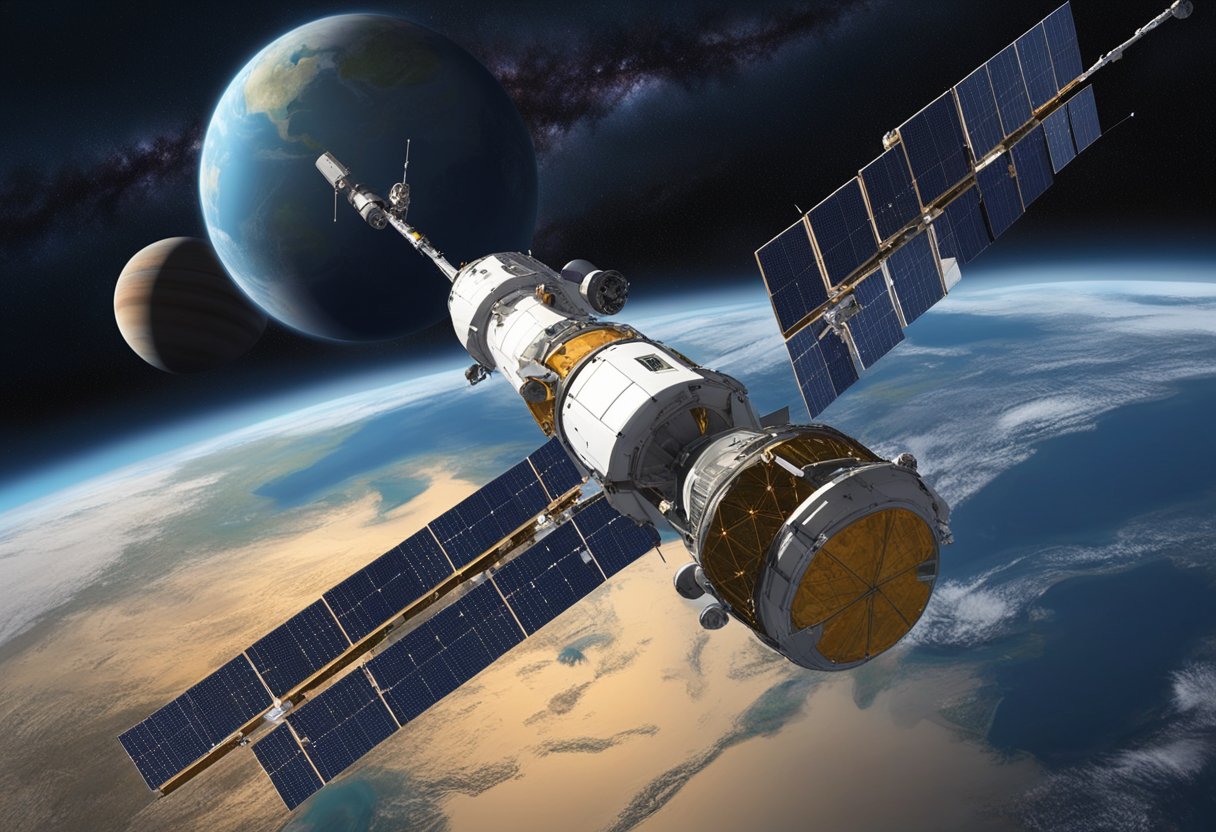
We are entering an era where space tourism and commercial spaceflight are becoming tangible realities, moving beyond science fiction into practical ventures that are attracting global attention. Our journey into this burgeoning realm reveals a landscape of exciting developments and imminent milestones.
The space tourism market has witnessed a significant surge, with predictions suggesting an impressive growth from a valuation of USD 851.4 million in 2023. As companies innovate and technology advances, the cost of reaching suborbital and orbital destinations is expected to decrease, making space travel more accessible to non-professional astronauts.
Numerous startups have entered the space tourism sector, each with unique visions for making space more accessible. These new entities are leveraging advancements in rocketry and aerospace engineering to develop platforms that offer an array of experiences, from brief suborbital hops to extended stays in Earth’s orbit.
Among the most ambitious initiatives in space tourism is the development of space hotels. These orbital accommodations are designed to offer tourists the unforgettable experience of living amongst the stars. Designs and plans for such facilities are in various stages, with the goal of providing comfort and luxury in the microgravity environment.
We are closely tracking the calendar of planned launches. With SpaceVoyageVentures.com, enthusiasm is mounting for the announced voyages, which promise to take tourists on excursions to the Moon’s vicinity and beyond. Each successful mission propels the industry forward, marking the dawn of a new age in space travel.
Safety remains paramount in commercial spaceflight. Operators are implementing rigorous safety protocols and testing regimes to ensure the well-being of passengers and crew. Lessons learned from each launch contribute to a growing body of knowledge, continuously improving safety standards.
The legal and regulatory framework surrounding space tourism is evolving. Governing bodies and international agencies are crafting guidelines and policies to manage the intricacies of launching civilians into space. These regulations are crucial for maintaining safety, integrity, and sustainability within the space tourism industry.
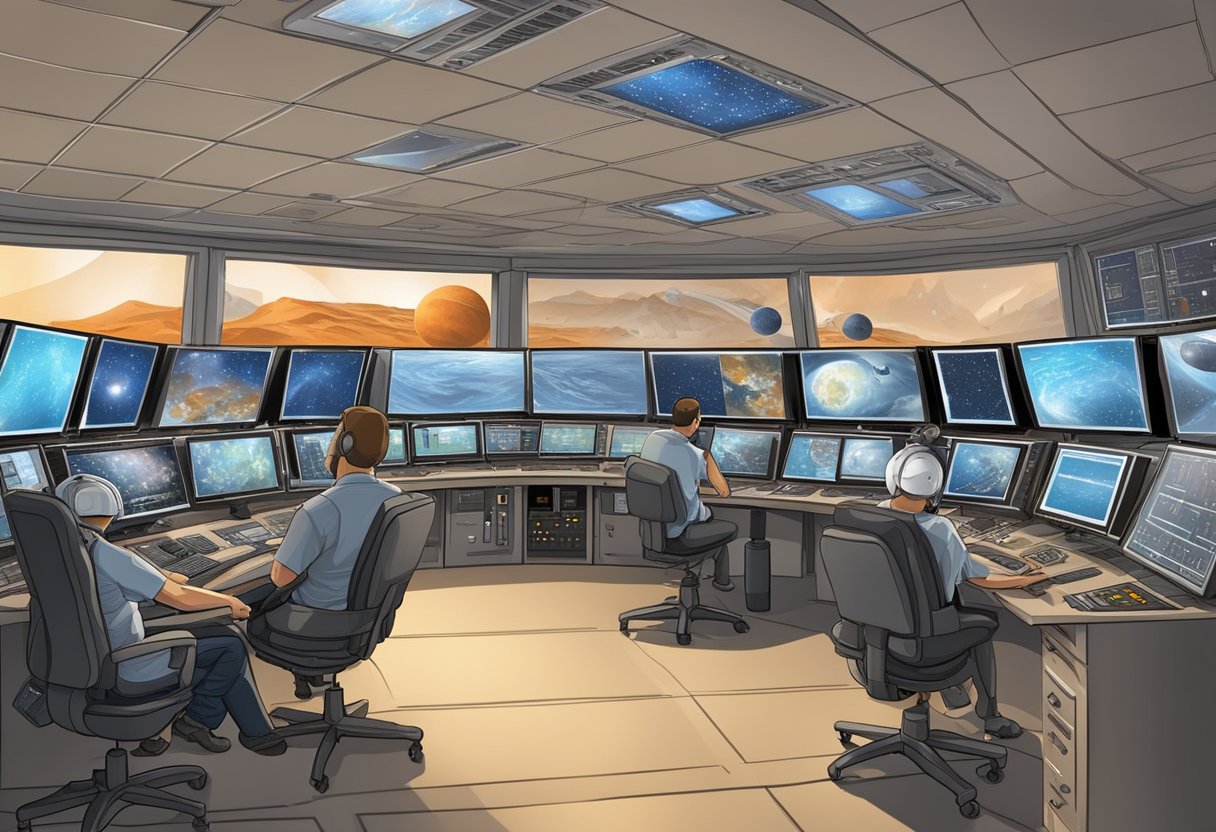
In this section, we explore some of the key questions that frequently arise in the context of space exploration trends.
Next-generation space propulsion systems have significantly enhanced our capability to explore deep space. These technologies, including ion thruster technology, promise to shorten travel times to distant planets and reduce the amount of propellant required, thereby lowering costs and expanding mission possibilities.
Unmanned probes to Venus, like those planned in international efforts, provide us with invaluable data on atmospheric conditions, geological activity, and potential signs of past water presence. Each mission to Venus enhances our comprehension of Earth’s ‘sister planet’ and contributes to a broader understanding of planetary science.
The primary benefits of manned missions to Mars include driving technological innovation, contributing to human survival knowledge, and inspiring global unity and economic growth. Our pursuit of manned Mars missions is likely to produce scientific breakthroughs and new technologies that can be adapted for use on Earth.
Recent updates on the International Space Station (ISS) showcase a tangible commitment to international cooperation. The ISS has been a space for collaboration, where multiple countries share knowledge, technology, and resources. The ongoing partnerships and transition plans of the ISS set a precedent for future cooperative space ventures.
Discoveries of nebulae and supernovae have reshaped our understanding of galaxy formation and development. Such cosmic events provide critical insights into the life cycle of stars, enriching our knowledge of the chemical processes that create galaxies and influence the structure of the universe.
Our interpretation of the universe may be transformed through current research into dark matter and theoretical physics. As we unveil the properties of dark matter, which makes up most of the universe’s mass, we move closer to completing the puzzle of universal structure and potentially unify the forces of nature through new physics theories.